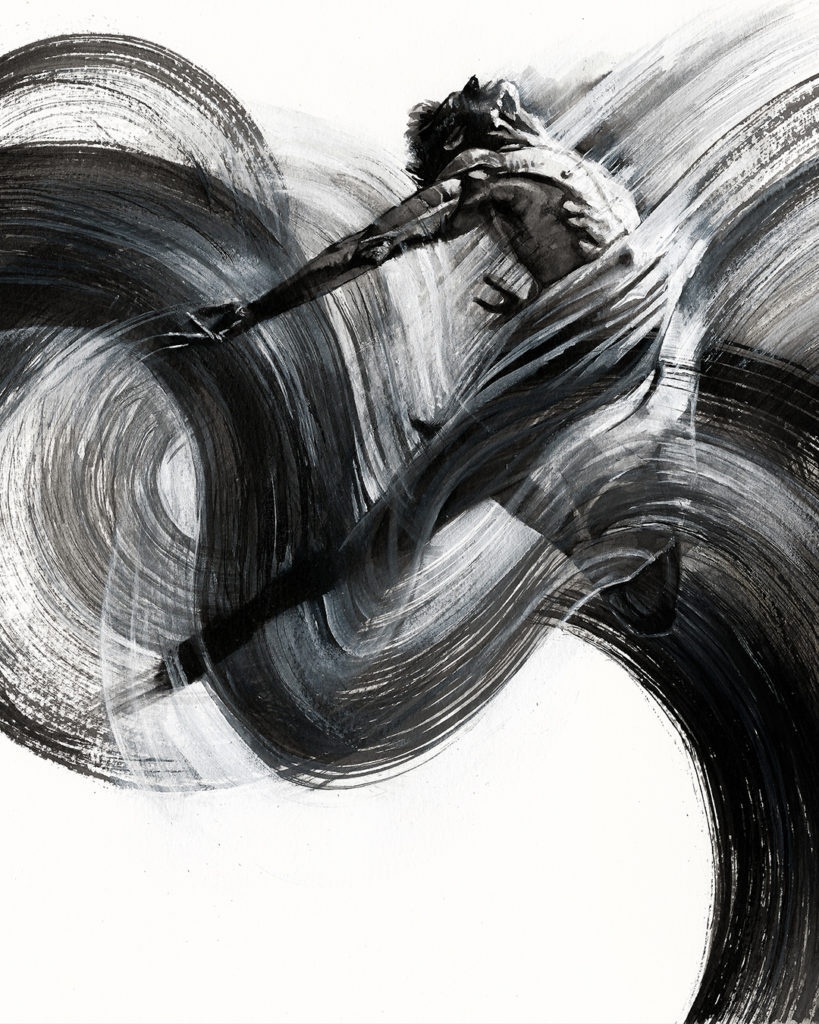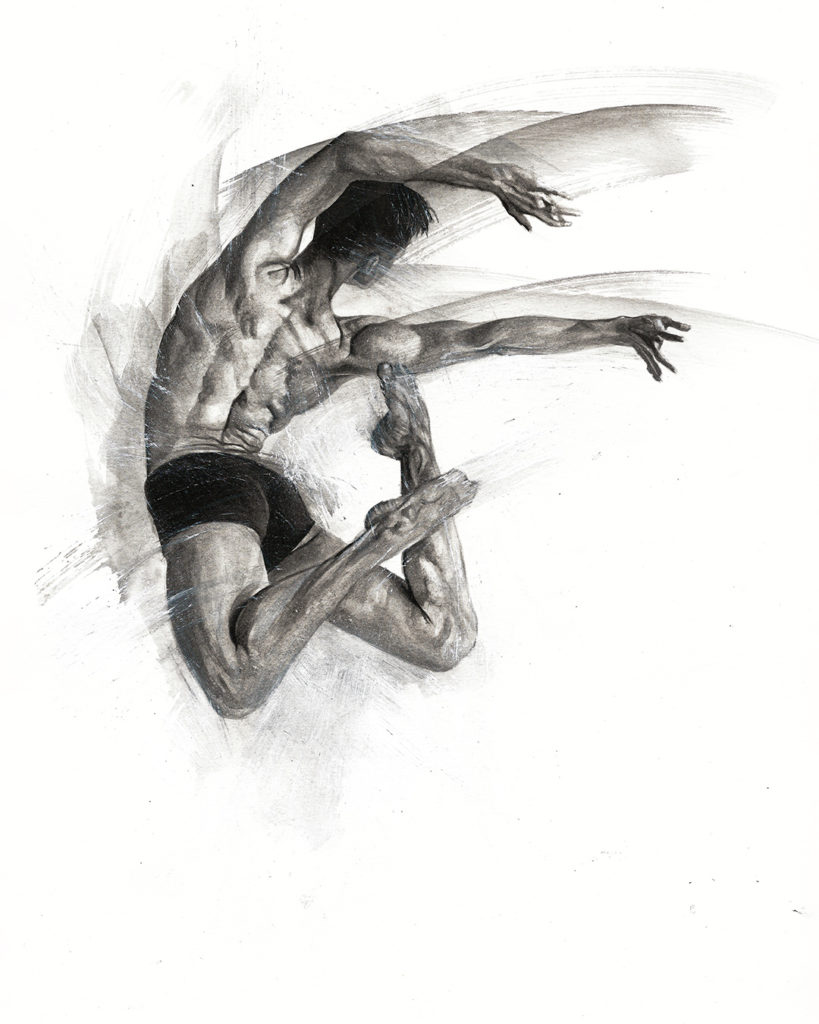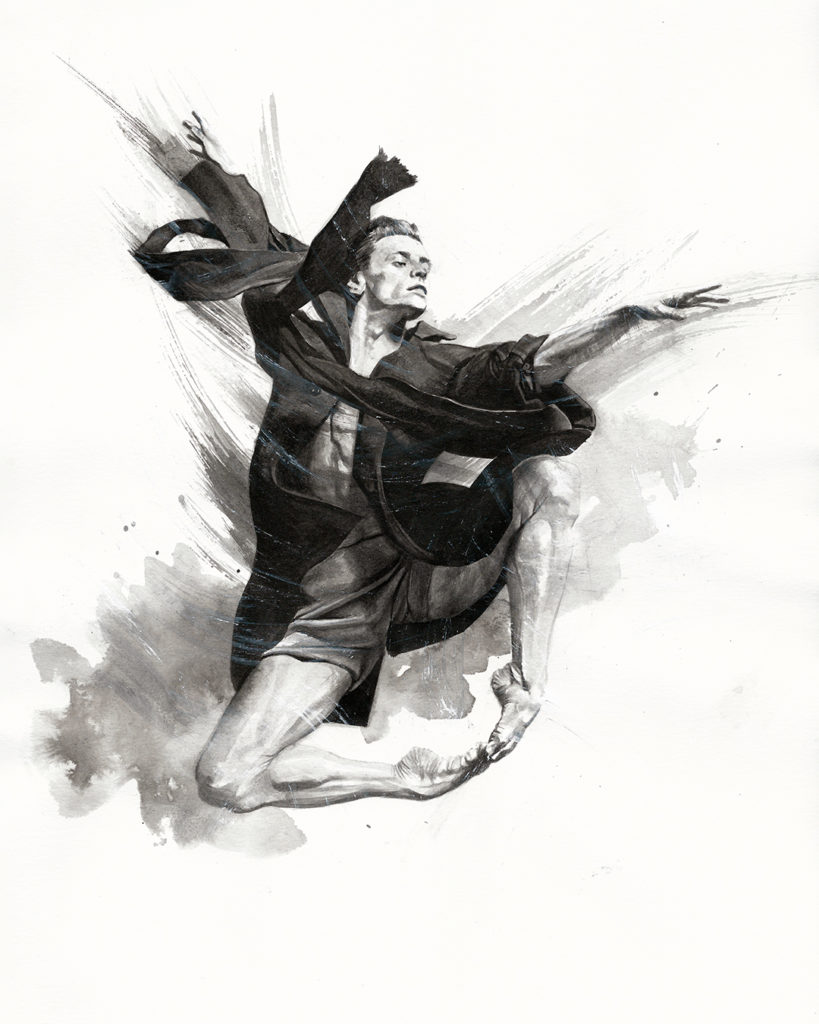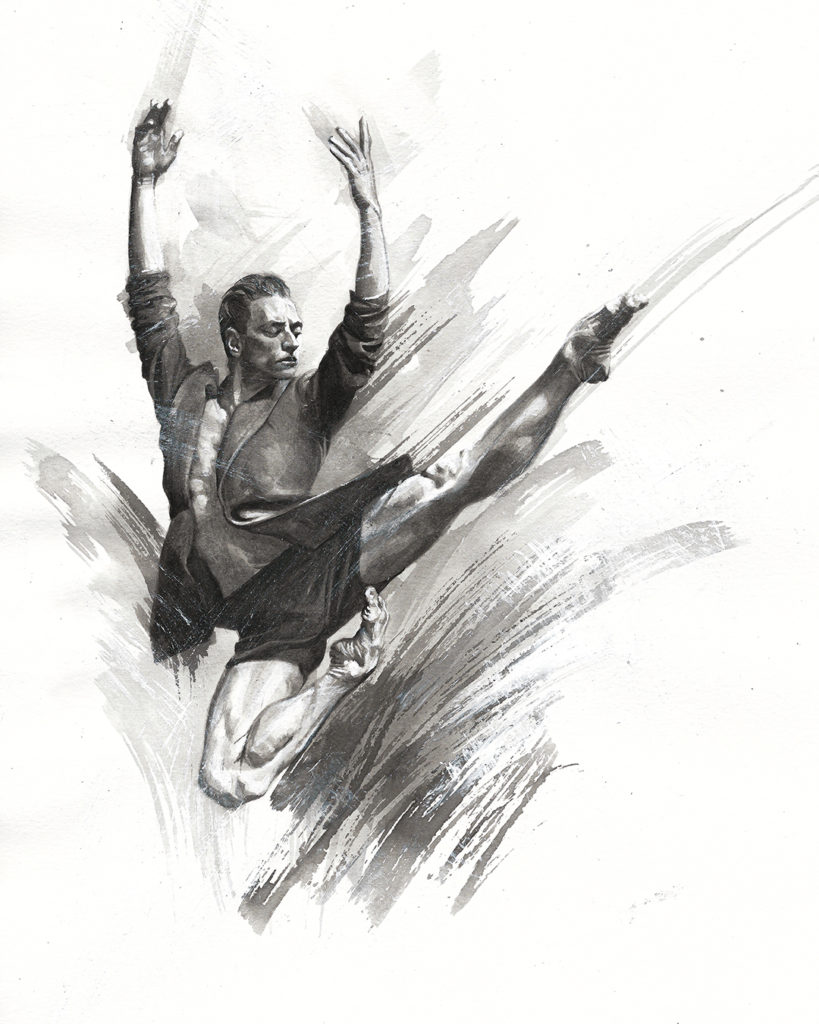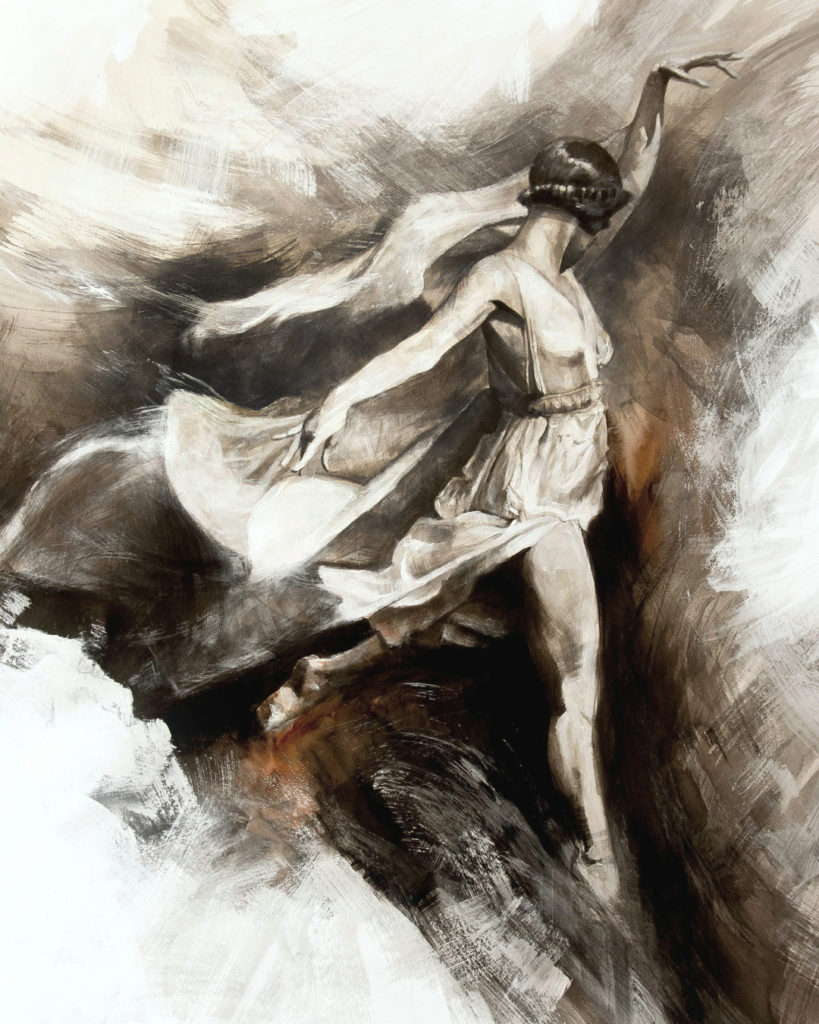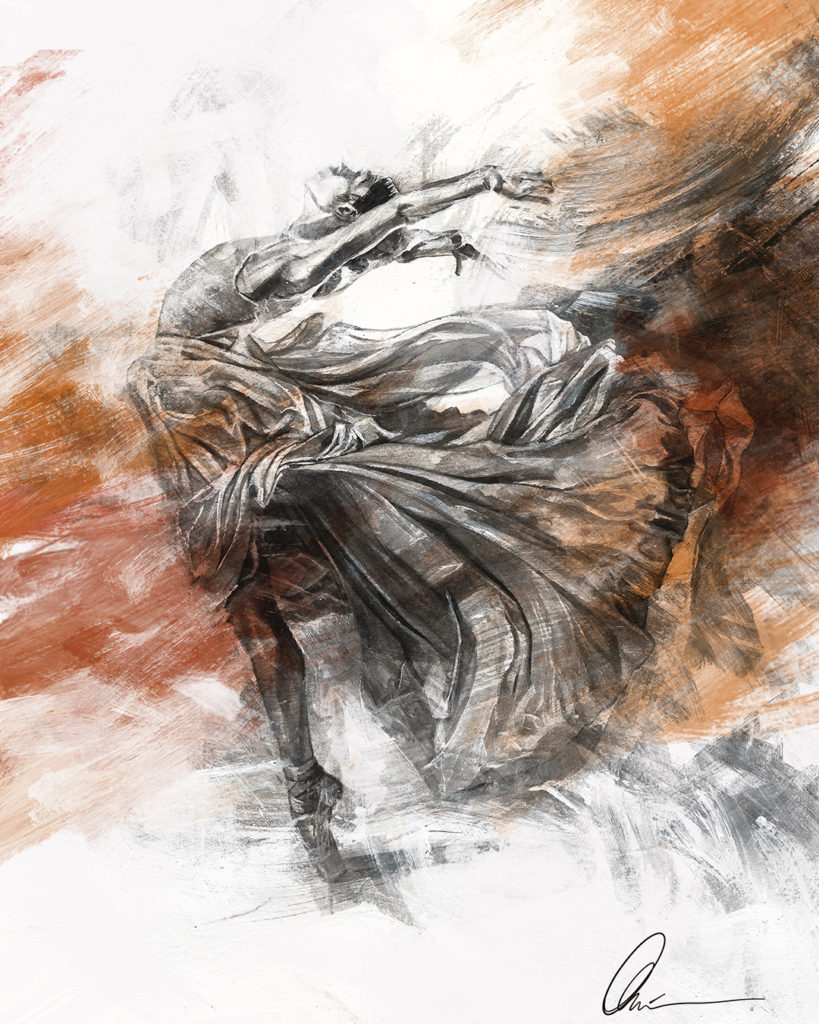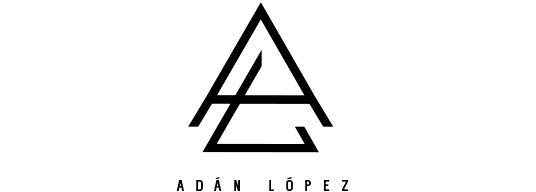In the 19th century, the relationship between dance and painting began to strengthen. Edgar Degas reflected in his paintings, elements belonging to the world of dance always from the point of view of the mere observer. This has changed over time. There has been a shift from a passive stance of the artist to a new form of expression in which the artist begins to express himself through painting, with the dancer’s body being the centre of the work.
If in my portraits the main objective is to transmit an emotion through the gaze, in dance the whole body is the tool to be used to convey those emotions. The principle on which this project is focused is freedom of expression and the looseness of the bodies through dance. For this, I use Indian ink and a technique based on loose strokes that help to emphasise the movement of the dancer himself. The spectator can feel the brushstroke and follow it on its way across the paper like the dancer with a fabric that leaves a trace of the movement.
My approach to painting dance scenes is marked by a group of sculptures inspired by the dancer Isadora Duncan, made by my grandfather, the sculptor Luis Montull. Isadora had a unique style. It was a dance very far from the classical patterns known until then, incorporating stagings and movements that had more to do with a philosophical vision of life perhaps linked to expressionism, and therefore a search for the essence of art that can only come from within.
In my particular case, the inspiration comes through the dancer Serguei Polunink and especially a photo session made by Jacob Sutton, who knew how to capture the strength and elasticity of the dancer through his classical aerial prowess.
